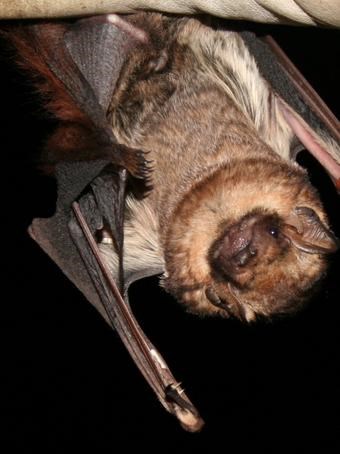
The Hawaiian hoary bat, closely related to the North American hoary bat, first landed in the islands a mere 10,000 years ago. In order to arrive, the animal had to travel over 2,000 miles of ocean. Although astounding, this amazing journey is feasible with assistance from the strong Trade Winds that blow toward Hawaiʻi. Among the over 1,300 species of bats, this journey is the single longest overwater flight followed by a founding of a new population. The bat is the only remaining native land mammal in Hawaiʻi, and is now listed as an endangered species. ‘Ōpe‘ape‘a in Hawaiian means “half-leaf", referring to the resemblance of the bat's open wing to part of the taro leaf. This wingspan can grow to be about one foot (30 cm) wide. Contrary to popular belief, these bats do not often dwell in caves or the island’s many lava tubes. These nocturnal creatures instead roost in trees. At or around sunset, the bats leave the tree to forage on insects, primarily moths. Threats to the endangered species include destruction of habitat, and collisions with wind turbines, barbed wire fences, and other structures. |
Last updated: February 18, 2021
